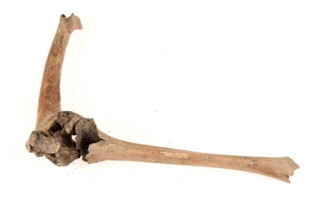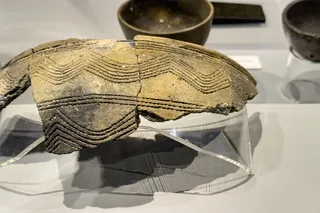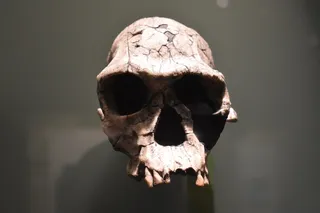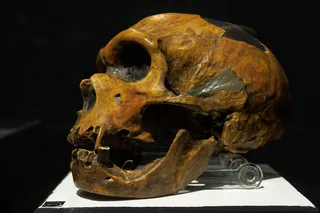Archaeologists in Sweden have combined historical documents, digital excavation records, and cutting-edge 3D modelling to tell the story of what it may have been like to live with a disability in the Middle Ages.
The study, published in Open Archaeology, analyzes the skeleton of a man in his thirties with a severe knee injury. By using an interdisciplinary approach, researchers were able to get a more accurate picture of the medical and cultural treatment of medieval disabled people.
“Deducing social norms regarding physical impairment and disability from religious and legal texts is difficult because it presents an idealized perspective,” said Blair Nolan of Lund University in a press release. “We can enrich our understanding of disability and identity through detailed osteological and archaeological analysis.”
Read More: What the Crypts of the Ca’ Granda Hospital Can Tell Us About 17th-Century Medicine
Medieval Remains Assessment
This is the first time that an interdisciplinary approach to medieval remains has been applied to specimens from the Nordic region. The skeleton being analyzed is from a man who lived in the late Middle Ages (1300 C.E. to 1536 C.E.) and sustained his knee injury during his 20's.
The injury includes a badly broken thigh bone affecting the knee joint. Researchers speculate that the injury could’ve been sustained from a heavy object or even a horse kick. Regardless of the cause, the injury left the man permanently disabled and unable to walk without a mobility aid like crutches or a leg stand.
There is evidence that the man received both short- and long-term care for his injury. In the short term, he likely received treatment for the pain, including lavender oil, opium, and alcohol. Additionally, he would’ve required treatment for the bone marrow inflammation, which likely involved opening the wound in order for the pus to drain.
The extensive, years-long continued treatment evidenced by the osteological analysis of the skeleton stands in some contrast with common historical beliefs about how society dealt with disabled individuals at the time.
A Cultural Comparison in the Middle Ages
When comparing the skeletal results to historical records, a very complex picture arises.
During the Middle Ages, people and social structures had complicated views of the physically disabled. In a religious context, disability was often seen as a punishment from God or a way to test one’s sense of repentance via self-punishment. However, in Sweden, the Church also collected and distributed money and food for the disabled, and its monasteries were used to provide medical care.
Other historical documents suggest a cultural prejudice towards disabled people. Legal punishments often included the removal of limbs, which caused an association between visible disabilities and criminal behavior. But even if someone was able to cover up their injury or disability with clothing or other means, they still were victims of prejudicial thinking.
Despite all of these cultural beliefs and behaviors, the man with the knee injury seemed to regain his high social standing even with his disability. His ability to receive medical care throughout his life shows he had financial and social access. Additionally, he was found buried right beside a church tower. At this time, the closer you were buried to a church, the higher your socioeconomic status.
Overall, this combination of cutting-edge osteological analysis and historical records proves that even though the Nordic man sustained an injury, leaving him with a lifelong disability, his social status helped him avoid cultural prejudices.
Read More: Both Men and Women Had Same Life Expectancy During the Medieval Period
Article Sources
Our writers at Discovermagazine.com use peer-reviewed studies and high-quality sources for our articles, and our editors review for scientific accuracy and editorial standards. Review the sources used below for this article:















